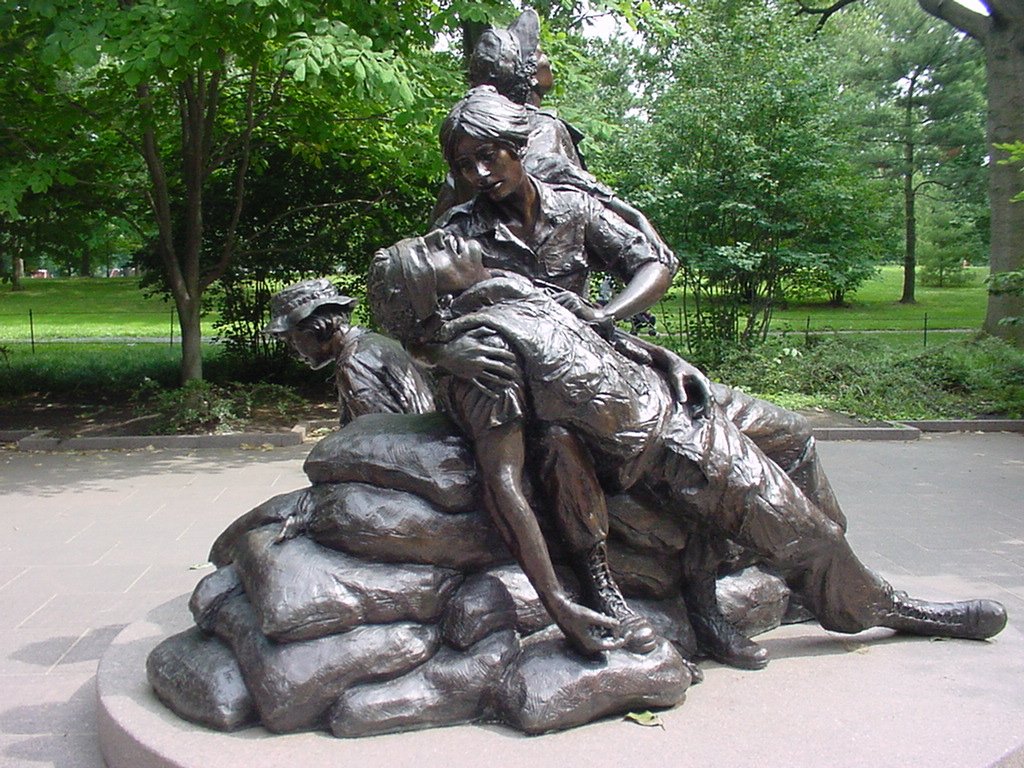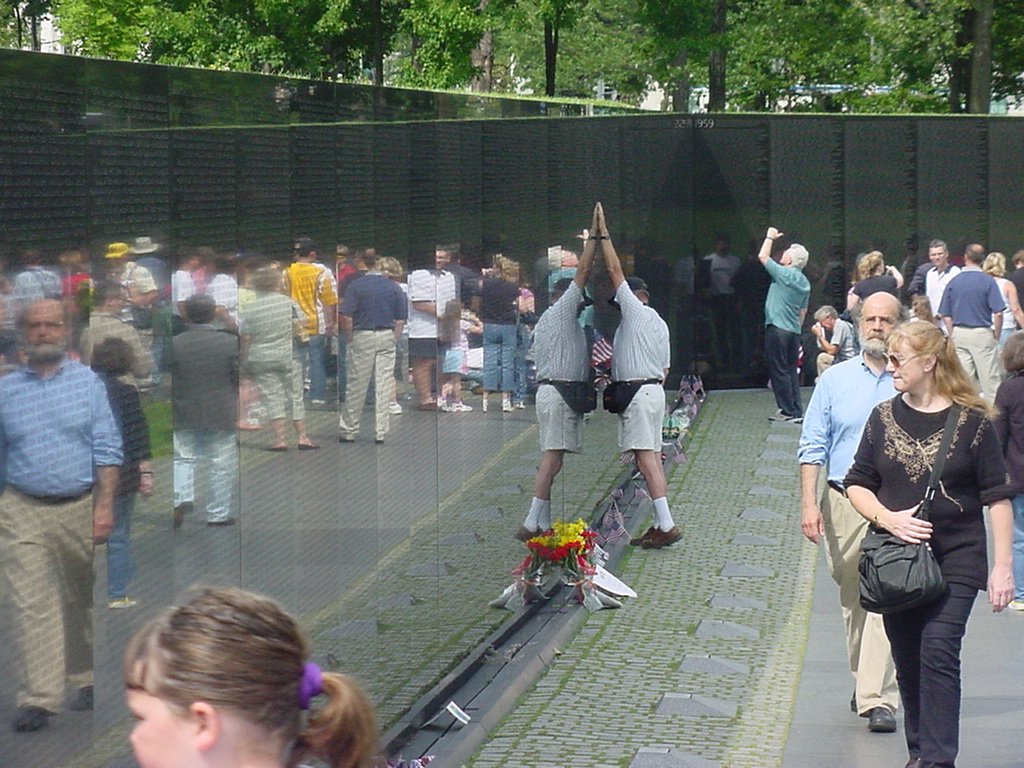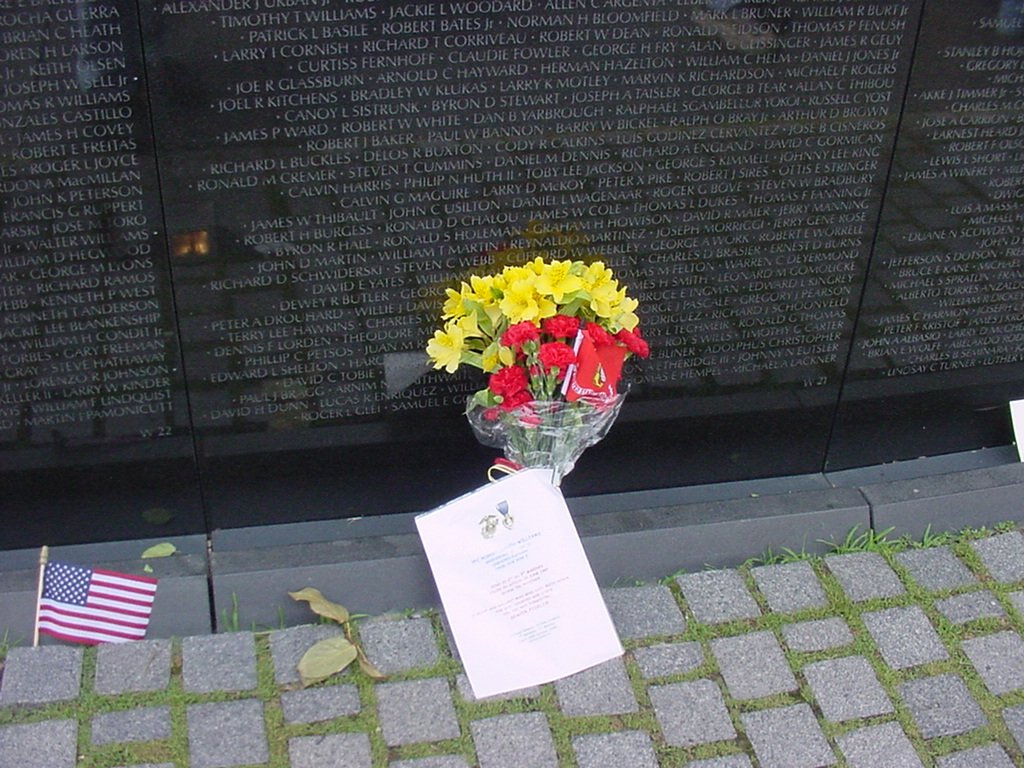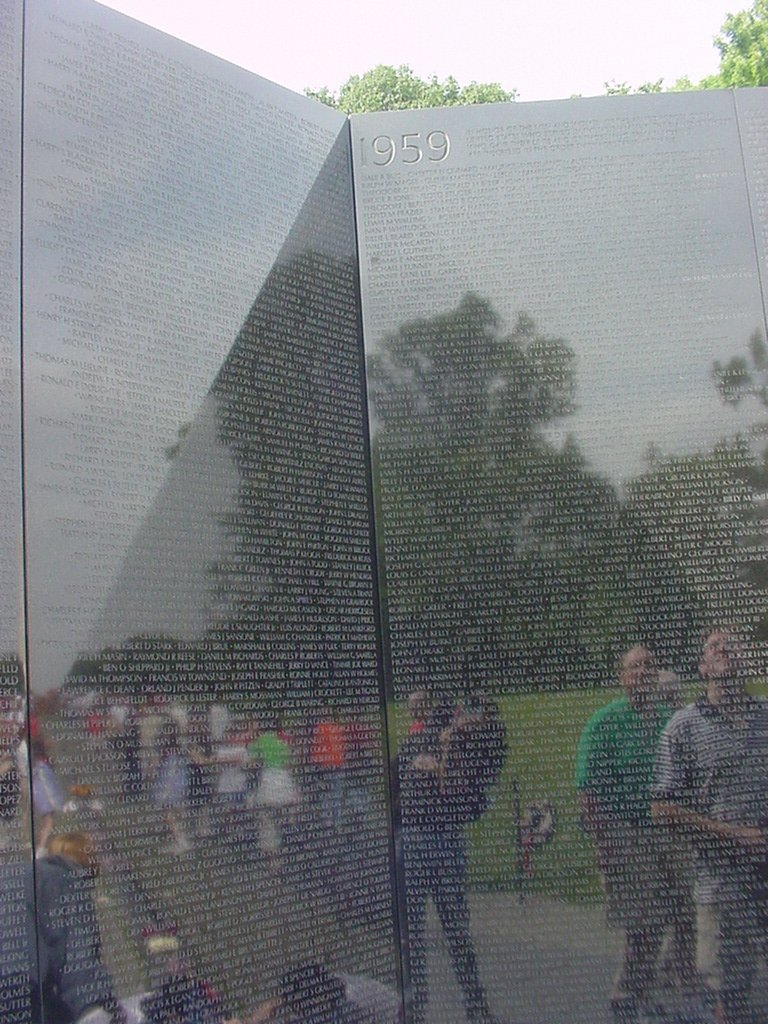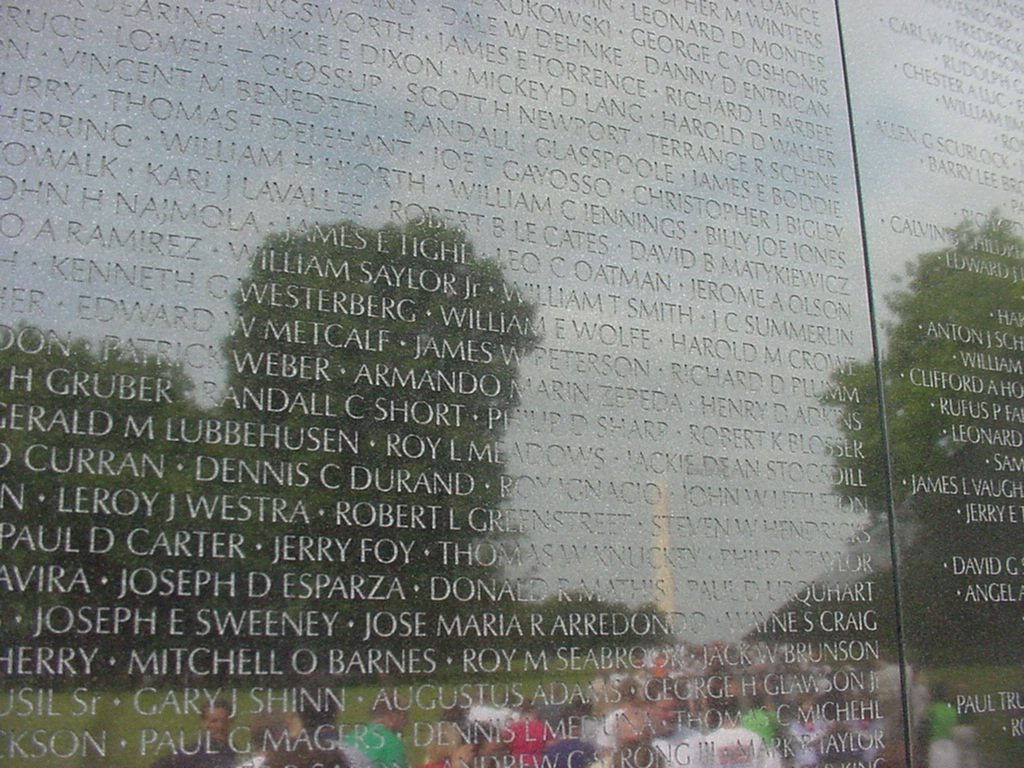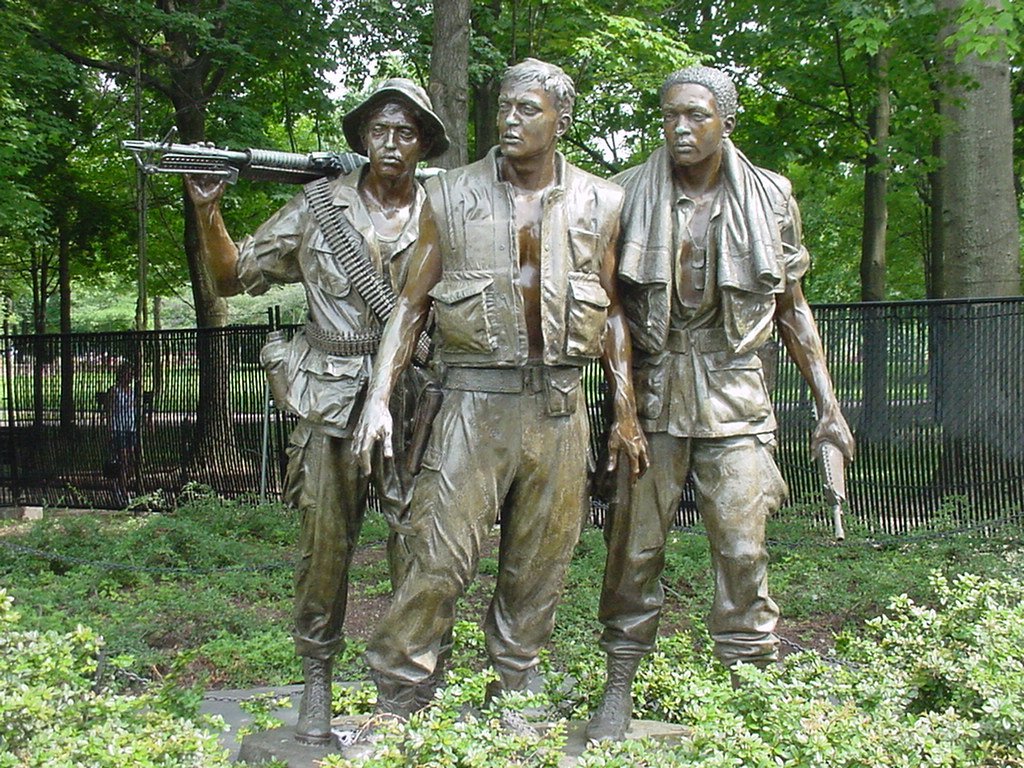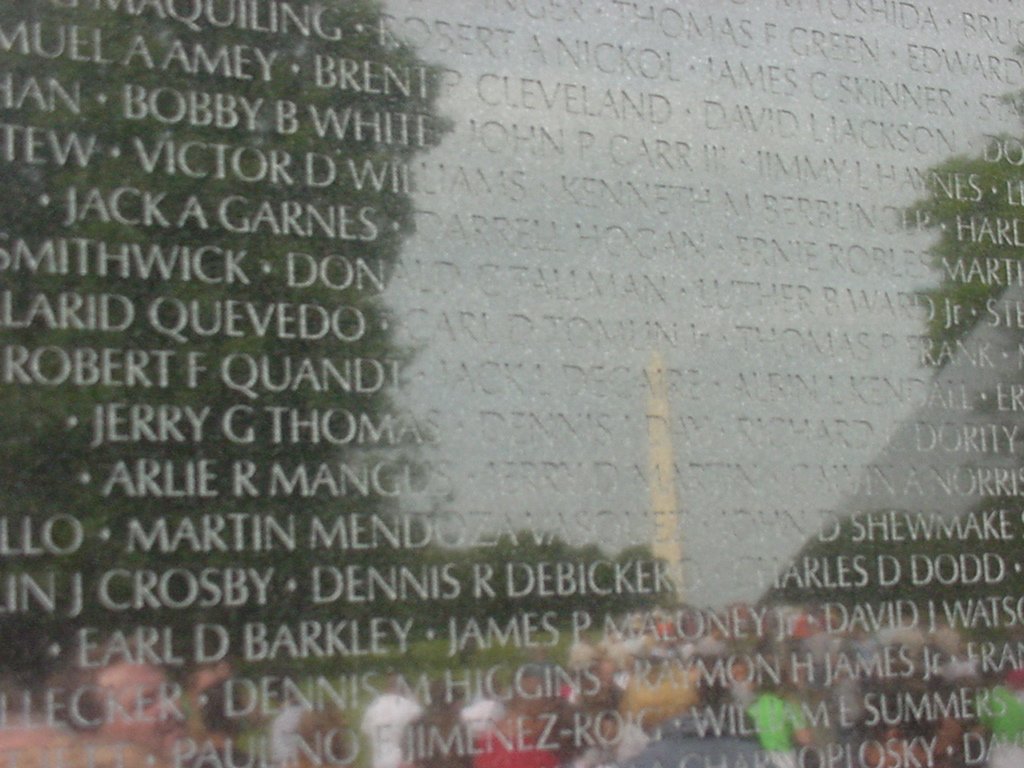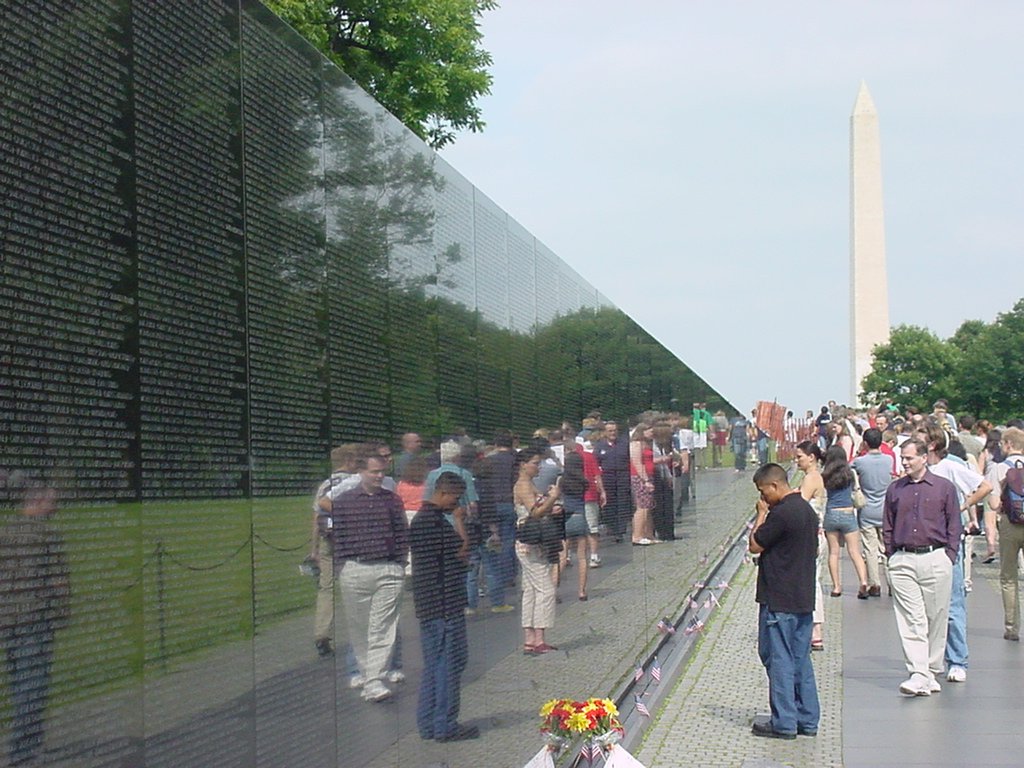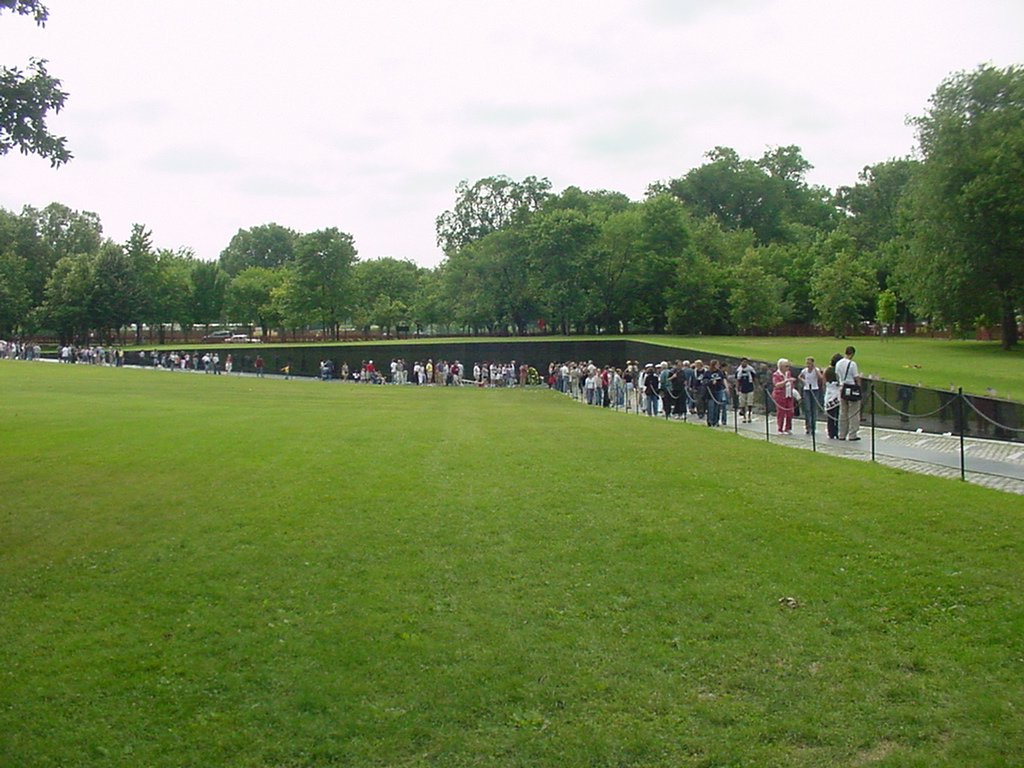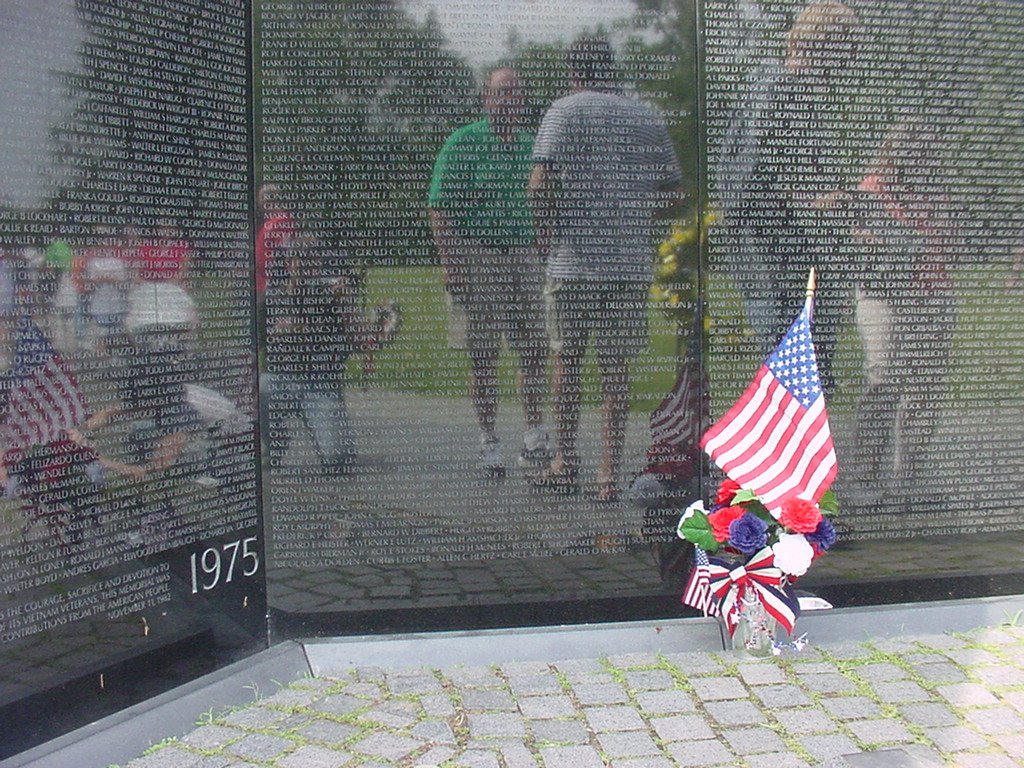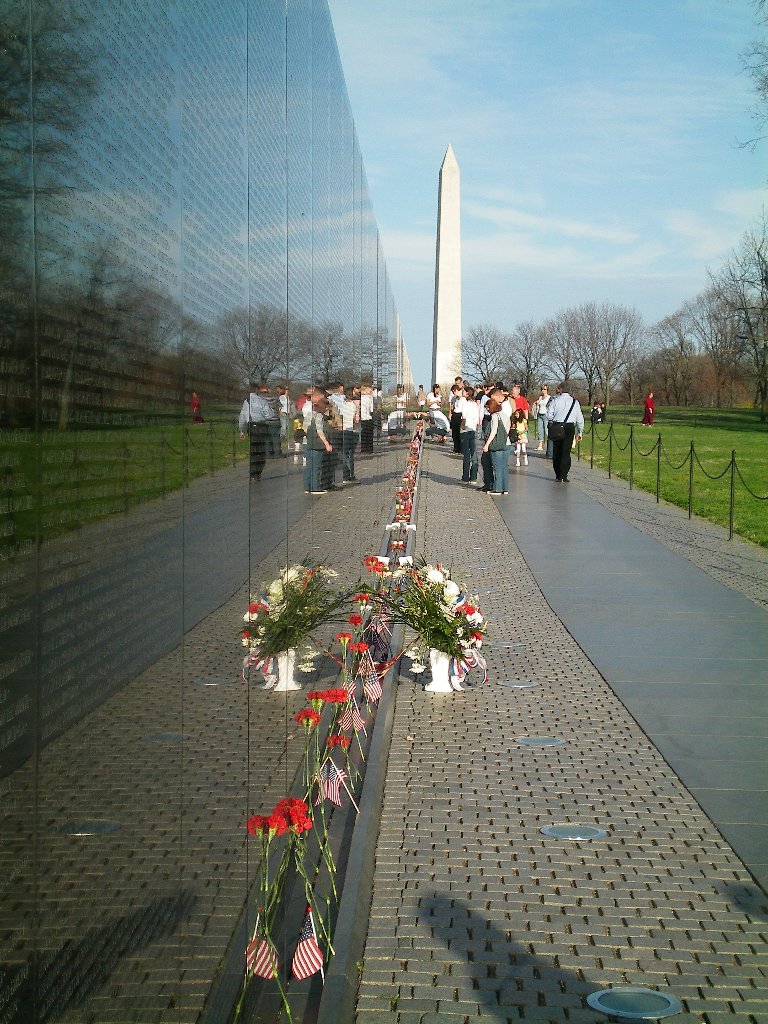
|
|
Vietnam Veterans Memorial
IN HONOR OF THE MEN AND WOMEN OF THE ARMED FORCES OF THE UNITED STATES
WHO SERVED IN THE VIETNAM WAR. THE NAMES OF THOSE WHO GAVE THEIR LIVES
AND OF THOSE WHO REMAIN MISSING ARE INSCRIBED IN THE ORDER THEY WERE TAKEN
FROM US. |
|
Click on image to enlarge in new window. |
|
|
The Healing Begins
The Vietnam Veterans Memorial Fund, Inc., a nonprofit charitable organization
formed to establish the memorial, was the idea of Jan Scruggs, a former
infantry corporal during the war. It was incorporated on April 27, 1979,
by a group of Vietnam veterans in Washington, D.C. The founders wanted
Vietnam veterans to have a tangible symbol of recognition from America
society. They early on realized that whatever design would ultimately result,
four basic criteria had to be met: (1) that it be reflective and contemplative
in character, (2) that it harmonize with its surroundings, especially the
neighboring national memorials, (3) that it contain the names of all who
dies or remain missing, and (4) that it make no political statement about
the war. By separating the issue of those who served in Vietnam from the
of U.S. policy in the war, the group hoped to begin a process of national
reconciliation.
Names Become the Memorial
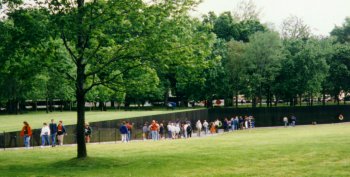 |
Maya Ying Lin conceived her design as creating a park within a park--
a quiet protected place unto itself, yet harmonious with the site. To achieve
this effect she chose polished black granite for the walls. Its mirrorlike
surface reflects the surrounding trees, lawns, monuments, and the people
looking for names. The memorial's walls point to the Washington Monument
and the Lincoln Memorial. The 58,202 names are inscribed in chronological
order of the date of the casualty, showing the war as a series of individual
human sacrifices and giving each name a special place in history. "The
names would become the memorial," Lin said. |
The names begin at the vertex of the walls below the date of the first
casualty and continue to the end of the east wall. They resume at the tip
of the west wall, ending at the vertex above the date of the last death.
With the meeting of the beginning and ending, a major epoch in American
history is denoted. Each name is preceded on the west wall or followed
on the east wall by one of two symbols: a diamond or a cross. The diamond
denotes that the individual's death was confirmed. The approximately 1,150
persons whose names are designated by the cross were either missing or
prisoners at the end of the war and remain missing and unaccounted for.
If a person returns alive, a circle, as a symbol of life, will be inscribed
around the cross. In the event an individual's remains are returned or
are otherwise accounted for, the diamond will be superimposed over the
cross.
Some Facts About the Memorial
The walls are 246.75 feet long and the angle at the vertex is 125 degrees
12'. There are 140 pilings with the average depth to bedrock being 35 feet.
The height of the walls at the vertex is 10.1 feet. The granite comes from
Bangalore, India; it was cut and fabricated at Barre, Vermont. The names
were grit blasted in Memphis, Tennessee, with the height of individual
letters being 0.53 inch and the depth, 0.038 inch.
The Faces of Honor
Sculptor Frederick Hart's goal was to create a moving evocation of the experience
and service of the Vietnam veteran. He has described it as follows:
"They wear it on their uniform and carry the equipment of war; they are
young. The contrast between the innocence of their young and the weapons
of war underscores the poignancy of their sacrifice. There is about them
the physical contact and sense of unity that bespeaks the bonds of love
and sacrifice that is the nature of men at war....Their strength and their
vulnerability are both evident." The flag flies from a 60-foot staff. The
base contains the emblems of the five services. The sculpture and flag
form an entrance plaza.
|
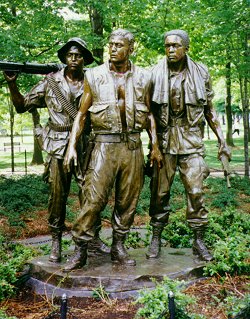
|
Establishing the Memorial
On July 1, 1980, Congress authorized a site in Constitution Gardens near
the Lincoln Memorial for the Vietnam Veterans Memorial, thereby providing
the prominent, large, park-like setting that the organizers had hoped to
find. That fall it was announced that the memorial's design would be selected
through a national competition open to any U.S. citizen 18 years of age
or older.
The 1,421 design entries submitted were judged anonymously by a jury
of eight internationally recognized artists and designers. On May 1, 1981,
the jury presented its unanimous selection for first prize. The winning
design was the work of Maya Ying Lin of Athens, Ohio, who at the time was
a 21-year old student at Yale University. The following January it was
determined that a flagstaff and figurative sculpture depicting fighting
men in Vietnam would be added to the memorial site. Washington sculptor
Frederick Hart was selected to design the sculpture of the servicemen.
On March 11, 1982, the memorial's design and plans received final approval,
and ground was formally broken on March 26. Construction of the walls was
completed in late October and the memorial was dedicated November 13, 1982.
The life-size sculpture was installed in fall of 1984. On November 11 of
that year, President Ronald Reagan accepted the completed memorial on behalf
of the Nation. The $7,000,000 cost of establishing the memorial was raised
entirely through contributions from corporations, foundations, unions, veteran's
groups, civic organizations, and more than 275,000 individual Americans.
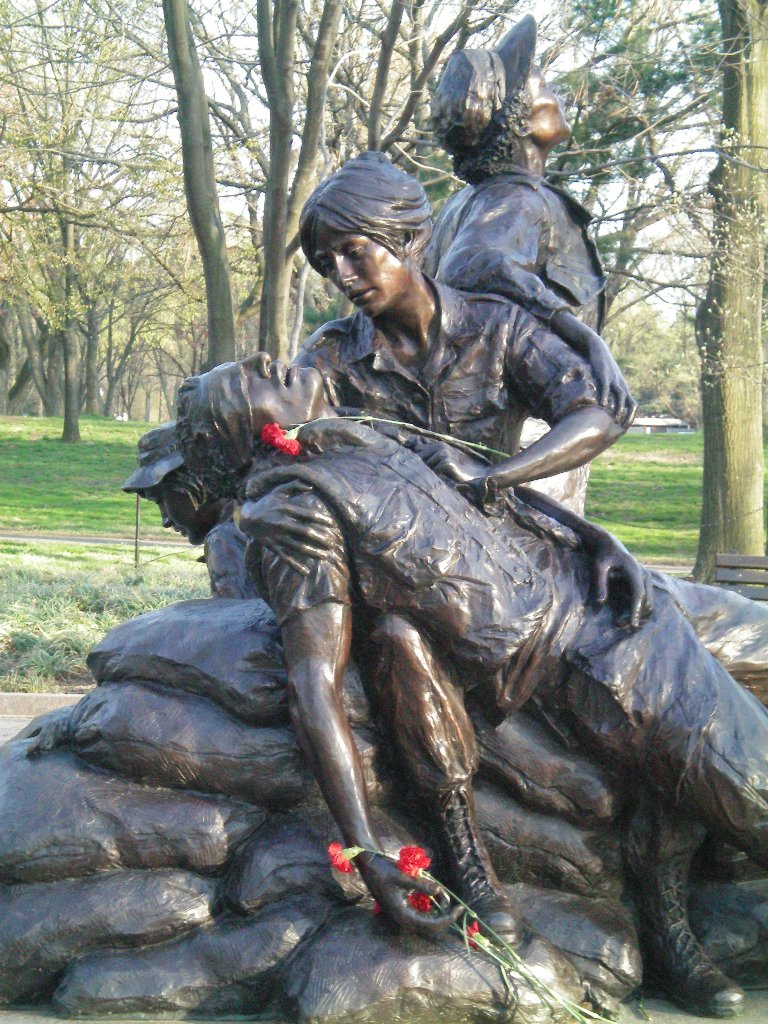
Click image to enlarge in a new window.
|
|
The Vietnam Women's Memorial
Dedicated on November 11, 1993, as part of the Vietnam Veterans Memorial,
the Vietnam Women's Memorial honors the women of the U.S. Armed Forces
who took part in the war. The statue was sculpted by Glenna Goodacre and
depicts three women coming to the aid of a fallen soldier. It recalls the
courage and sacrifice of all the women who served. Planted around the memorial
are eight yellowwood trees--a living tribute to the eight servicewomen
killed in action while in Vietnam. |
The completed memorial has achieved all that Lin and Hart hoped it would
-- and more. Rubbings are taken of the names by loved ones. Every day family
members and friends leave mementos and tokens of remembrance at the memorial,
making them as much of a legacy of the Vietnam years as the memorial itself.
Administration
The Vietnam Veterans Memorial is administered by the National Park Service,
U.S. Department of the Interior. Address inquiries to the Superintendent,
National Capital Parks-Central, 900 Ohio Drive, SW, Washington, DC 20024-2000.
Text reprinted from National Park Service Brochure, Government Printing
Office, 1995.
To learn more about the Vietnam Veterans Memorial, visit the National
Park Service web site that contains additional photos and data at http://www.nps.gov/vive/.
Additional images of the Vietnam Memorial. Click on the image to enlarge. A
new window will open.
All
images are 1024 by 760. © George Cassutto, 2010
George Cassutto's Cyberlearning
World
[Lesson Plan of the Day]
[Cassutto
Memorial] [About
the Author] [Search]
[Civics
Lesson Plans]




